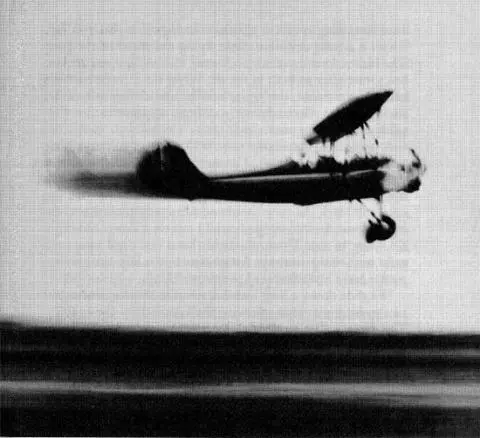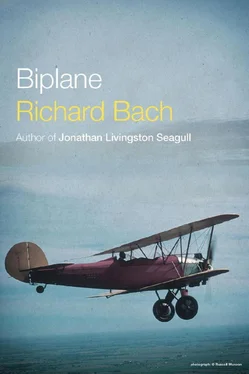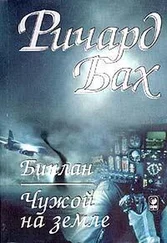Ричард Бах - Biplane
Здесь есть возможность читать онлайн «Ричард Бах - Biplane» весь текст электронной книги совершенно бесплатно (целиком полную версию без сокращений). В некоторых случаях можно слушать аудио, скачать через торрент в формате fb2 и присутствует краткое содержание. Город: New York, Год выпуска: 2012, ISBN: 2012, Издательство: Scribner, Жанр: Современная проза, на английском языке. Описание произведения, (предисловие) а так же отзывы посетителей доступны на портале библиотеки ЛибКат.
- Название:Biplane
- Автор:
- Издательство:Scribner
- Жанр:
- Год:2012
- Город:New York
- ISBN:978-1-4516-9744-5
- Рейтинг книги:3 / 5. Голосов: 1
-
Избранное:Добавить в избранное
- Отзывы:
-
Ваша оценка:
- 60
- 1
- 2
- 3
- 4
- 5
Biplane: краткое содержание, описание и аннотация
Предлагаем к чтению аннотацию, описание, краткое содержание или предисловие (зависит от того, что написал сам автор книги «Biplane»). Если вы не нашли необходимую информацию о книге — напишите в комментариях, мы постараемся отыскать её.
Biplane — читать онлайн бесплатно полную книгу (весь текст) целиком
Ниже представлен текст книги, разбитый по страницам. Система сохранения места последней прочитанной страницы, позволяет с удобством читать онлайн бесплатно книгу «Biplane», без необходимости каждый раз заново искать на чём Вы остановились. Поставьте закладку, и сможете в любой момент перейти на страницу, на которой закончили чтение.
Интервал:
Закладка:
If the wind and the sun and the mountains over the horizon do not change, a year that we make up in our heads and on our paper calendars is nothing. The farmhouse, there below. How can I tell that it is a farmhouse of today and not a farmhouse of 1931?
There’s a modern car in the driveway. That’s the only way I can tell the passing of time. It isn’t the calendar makers who give us our time and our modern days, but the designers of automobiles and dishwashers and television sets and the current trends in fashion. Without a new car, then, time stands still. Find an old airplane and with a few pumps of prime and the swing of a shining propeller you can push time around as you will, mold it into a finer shape, give its features a more pleasant countenance. An escape machine, this. Climb in the cockpit and move the levers and turn the valves and start the engine and lift from the grass into the great unchanging ocean of air and you are master of your own time.
The personality of the biplane filters back to me as we fly. Elevator trim has to be almost full down to keep the nose from climbing when I take my hand from the control stick. Aileron forces are heavy, rudder and elevator forces are light. In a climb, I can push the throttle full forward and get no more than 1750 revolutions per minute from the shining propeller. The horizon is balanced, in level flight, just atop the Number Two and Five cylinder heads. The airplane stalls gently, and before it stalls there is a tapping in the stick, a warning that the nose is about to drop slowly down, even with the control stick pulled back. There’s nothing at all vicious about this airplane. Windy, of course, when you move your head from behind the glass windscreen, and not so quiet as modern airplanes. The wind goes quiet when the airplane is near its stalling speed; it shrieks warnings if it flies too fast. There is a great deal of airplane flying out ahead of the pilot. The forward windscreen clouds over with oil film and rocker-box grease after an hour in the air. When the throttle has been back for a moment, the engine misfires and chokes as it comes forward again. Certainly not a difficult airplane to fly. Certainly not a vicious one.

A circle over the airport now, with its great runways lying white ribbons in the grass. The most difficult time, they say, is the landing. I must look over the field carefully and make sure the runway is clear. When I am ready to land, that big nose will block the view ahead and I can only trust that nothing will wander into my path until I can slow down and begin S-turning to see. There, the field that I will land upon, the grass next to the runway. Away over to the left, the gasoline pumps and a little cluster of people watching.
We slide down a long invisible ramp in the sky, down past two giant poplar trees guarding the approach to the runway. The biplane flies so slowly that there is time to watch the poplars and see how their leaves flutter silver in the wind. Then I look out to the side as the runway appears below, look out to the side and judge the height, gage the height of tall wheels above the grass, and with a shudder the stall and the airplane is down and rolling left-rudder right-rudder keep it straight beside the runway don’t let it get away from you right-rudder now, just a touch of right rudder. And that’s all there is to it. Simple as can be.
Another takeoff, another landing, another bit of knowing tucked away. Somehow, taxiing to the hangar, I’m surprised that it should be so easy to demolish the stories and the grim warnings.
“Evander Britt, you just made a deal.”
The trade is completed in a day, with only an occasional rustle in the forest that shows where a misgiving lurks.
I am owner of a 1929 Detroit-Ryan Speedster, model Parks P-2A.
Goodbye, Fairchild. We have flown many hours and learned many things together. Of instruments humming and the things that happen when they cease to hum, of riding invisible radio beams over Pennsylvania and Illinois and Nebraska and Utah and California, of landings at international airports with jetliners close behind and on beaches with only a gull or a sandpiper to hurry us along. But now there is more to learn, and different problems.
The hangar doors that had opened on a new way of life close now on an old one. Into the front cockpit of the Parks go the sleeping bag and sandwiches and the jug of water, cans of sixty-weight oil and cockpit covers and C-26 spark plugs, tools and tape and a coil of soft wire.
Fill the gas tank to its five-hour brim; a last handshake from Evander Britt. From those who stand near and know where I plan to fly, a few faint words.
“Good luck.”
“Take it easy, now.”
“You be careful, hear?”
A newspaper reporter is interested to find that the biplane is seven years older than its pilot.
Engine started, muttering softly at the bottom of its drum, I buckle into the unfamiliar parachute harness, fasten the safety belt, and jounce slowly over the grass, fanning it back behind me, moving into position for takeoff.
It is one of those times when there is no doubt that a moment is an important moment, one that will be remembered. In that moment, the old throttle goes forward under my glove and the first second of a journey begins. The technical details are here, and crowding about: rpm at 1750, oil pressure at 70 psi, oil temperature at 100 degrees F. The other details are here too, and I am ready to learn again: I can’t see a thing ahead of this airplane when it is on the ground; look how far forward the throttle will move without gaining another revolution from the engine; this is going to be a long and windy journey; note the grassblades growing at the edge of the runway; how quickly the tail is flying and we can skim the ground on the main wheels only. And we’re off. A constant thunder and beating twisting wind about me, but I can hear it all as they are hearing it, on the ground: a tiny hum increasing, for a quick second loud and powerful overhead, then dwindling on down the scale to end in a tiny old biplane quiet against the sky.

2

AS LONG as I’m so few miles from the Atlantic, I’ll fly east to the ocean. Make it a more fitting triumph to have flown literally from one coast to the other; from sea, as it were, to shining sea.
We are aloft, and heading east as the sun grows into a cool setting fireball behind. The shine is gone from the railroad tracks, and shadows have washed together into a dark protecting coat for the ground. I am in daylight still, but that is night seeping up out of the ground and my new old airplane has no lights. Barely airborne, it is time to land.
Five minutes away, down and to our right, a field. A pasture. It is a quarter mile long, with only a single row of trees to make the landing approach an interesting problem. We circle the field three times, the biplane and I, watching closely for ruts and holes and tree stumps and hidden ditches. And in the circling and the watching, the quarter mile of land changes from anonymous old pasture to my pasture; my field, my home for the night, my airport. A few minutes ago this land was nothing, now it is my home. I know that I shall have to land well to the left, paralleling the dirt road, avoiding a jackstraw pile of pine logs near the forest.
For the briefest of moments, a frightened voice. What the devil am I doing here, sitting in a wild old biplane with the sun gone down, circling a pasture with intent to land and a good chance of overlooking one felled tree in the dark grass and adding another twenty-three hundred pounds of kindling to the pile of jackstraws? One last cautious pass. The field looks short, and it looks wet, too. But I am committed to land, short or not, wet or not, kindling or not.
Читать дальшеИнтервал:
Закладка:
Похожие книги на «Biplane»
Представляем Вашему вниманию похожие книги на «Biplane» списком для выбора. Мы отобрали схожую по названию и смыслу литературу в надежде предоставить читателям больше вариантов отыскать новые, интересные, ещё непрочитанные произведения.
Обсуждение, отзывы о книге «Biplane» и просто собственные мнения читателей. Оставьте ваши комментарии, напишите, что Вы думаете о произведении, его смысле или главных героях. Укажите что конкретно понравилось, а что нет, и почему Вы так считаете.





